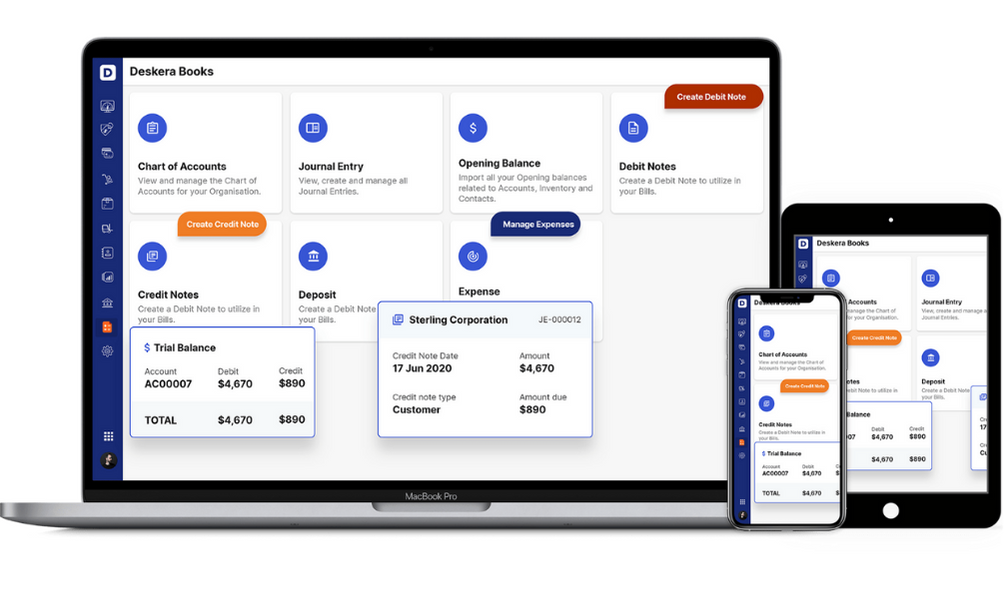"The purpose of forecasting not just lies to predict the future, but to influence it."
These words take you towards highlighting the importance of making projections or predicting the future required in every sphere of life. Be it weather or climate forecast, career prediction of an individual or market forecast in the marketplaces , it helps you to anticipate the current conditions and redirect towards the possibilities in the near future.
When it comes to the concept of business forecasting, there is one crucial aspect of financial management that draws the attention of every business owner, i.e. Financial Projections.
As a business owner, you need to be very focused on making good financial projections that allow you to anticipate the financial highs and lows.
Preparing for the future, focusing on spending and anticipating the financial projections for a business is a signal that you are prepared for the future. As a result, investors feel confident to invest in your business and attract a lot of funding opportunities for the business.
This article will cover the financial projections in detail as to why forecasting is critical for the business and the method to compile the financial projections.
Following is the overview of the article:
- What are financial projections?
- What's the purpose of financial projections?
- What are key financial statements used in making the financial projections?
- 5-step guide to making financial projections for business
- How can Deskera Help You?
- Key Takeaways
What are financial projections?
The financial projection is an estimate of the future revenue and expenses required in the business.
Financial projections are the result of a comparative analysis of the previous year's data to get a snapshot of what is going to be the business's future.
Financial projections help make the right predictions of the business performance and help make crucial decisions related to investments, financing sources, control strategies and inventory management.
When we talk about projections, then there are two types of financial projections that business owners tend to make,
- Short term projections
- Long term projections
- Short term projections that generally cover a year or breakdown into a series of months
- Long-term projections that cover the next 3 to 5 years are specially meant to attract investors or create a strategic plan.
It is essential to consider that financial projections are a valuable tool for entrepreneurs or business owners considering the insights they offer into the business's ability to generate maximum profit, increase the cash flow and make timely payment of debts.
Financial projections are a key to making informed decisions about the business plans. The companies that create accurate adaptive financial projections are better positioned to determine the primary production and personnel needs and future resource requirements.
What's the purpose of financial projections?
Before we jump towards the purpose of financial projections, it is crucial to know that financial forecasting is the most critical aspect of your business.
Whether you have a new or established business, financial forecasting plays a vital role in helping you plan for the future.
Creating financial projections is a mandatory exercise for many businesses because it covers one aspect and compiles a lot of elements together to provide you with the correct prediction of the revenues and expenses for a business venture. For instance, it covers financial information, market conditions and understanding of the potential investors who are willing to make decisions on your assets and resources.
In the business environment, there are a lot of situations that bring financial projections into the picture, mainly to attract investors or at the time of bank loan applications.
However, there are several key purposes of financial projections that can be discussed below:
- Creating Business Plan
- Attracting Investors
- Creating financial budgets
- Applying for loans by banks and financial institutions
- Solving business purposes
1. Creating Business Plan
Financial projections help the potential investors or the banks know the business's operational tendency. Based on business plans and activities, they conclude to extend the loan or invest their funds in the business
2. Attracting Investors
Before investing their funds in the business, investors look to measure the business's financial viability; financial viability can be measured in terms of expenses, revenues, and growth patterns, which becomes an essential key for the investor to decide whether to invest in the business or not.
3. Creating financial budgets
Financial projections help you map out the business's potential growth and create financial budgets that enable the business to grow and thrive in the near future.
4. Applying for loans by banks and financial institutions
Before granting a loan or assistance, banks and financial institutions are interested in knowing the business's financial health. By financial health, we mean assessing the financial statements of the business performance and predicting the business's growth potential.
5. Solving business purposes
Apart from the major four purposes, financial projections also help solve the business purposes that include anticipating the problems before they arise and helping you prepare for the future.
It also helps you plan the significant business expenses, demonstrates how to repay the business loans, and assists in pricing and production planning.
What are key financial statements used in making the financial projections?
The financial projections are based on the three key financial statements,
These three financial statements provide enough information related to financial reports to the analyst and highlight the business's financial health.
Let's take a brief look at each of the financial statements:
1. The Income Statement
An income statement is also known as a profit and loss statement or P&L Account. It provides an overview of the organization's revenues, expenses and net income.
2. Balance Sheet
The balance sheet is a snapshot of the assets and liabilities that measures the business's financial position in a particular year.
The balance sheet also shows the hypothetical calculations and future financial projections.
Following is a specimen of the balance sheet

3. Cash Flow Statement
A Cash Flow statement is described as a statement that monitors the business's inflows and outflows of cash and non-cash items.
Businesses' earnings are projected before interest, tax, depreciation and amortization.
Following is a specimen of the cash flow statement

Apart from the above key three financial statements, the business needs to compile its financial projections spreadsheet that includes the metrics and figures of the following information:
- Sales forecast
- Operating Expense
- Payroll Expense (if applicable)
- Amortization and Depreciation
- Cost of Goods Sold (COGS)
- Break-Even Analysis
You are ready to create your financial projections accurately based on all the combined information.
5-step guide to making financial projections for business
The method to create financial projections for the business remains the same due to the same level of information required whether the business is up and running or still in the planning stages.
You can either make the financial projections for the business either based on your experience in the field or by doing some market research in the relevant industry.
Following is a five-step guide that will take you through the creation of financial projections for the business:
- Sales projection
- Calculation of Income Statement
- Anticipating Fixed Costs
- Finding the break-even point
- Planning for the unexpected
1. Sales projection
Sales projection lays the base of financial forecasting in the business. This is why projecting sales is the first step of financial forecasting. Sales forecasting helps firms to understand the risk area and the kind of staffing, resources and funding they require for the future.
Therefore, projecting the sales will enable the business to decide on different levels like price, inventory and production. Based on that, you can easily forecast the financial projections.
2. Calculation of Income Statement
As already mentioned, an income statement is the key financial statement required for the financial projections. A projected income statement reflects the expectation of revenue and profit based on the estimated expense and losses over a specific period of time.
Here, you can determine the figures of the spreadsheet that includes the revenue, cost of good source and expenses to determine the right figures for the projections.
3. Anticipating Fixed Costs
After determining the sales projections and calculating the income statement, the next step is to anticipate the fixed business costs that won't change based on the number of products sold.
These fixed costs are bound to happen, and by anticipating these fixed costs, businesses prepare the budget with actual numbers derived from the industry such that it does not overpay for its needs.
Examples of fixed costs include rent, amortization and depreciation, utility bills, and operating expenses on insurance premiums.
Tip!
It is important to note that there might be potential fluctuations even if you have already predicted the precise amount of fixed cost for the particular year. The fluctuations can be due to the market, inflation properties or interest rates.
Therefore, it is recommended to slightly over-estimate the fixed cost such that you can keep up with these fluctuations.
4. Finding the break-even point
The break-even point refers to a number at which the business has the same expenses and revenue.
It refers to a point when your business operations have generated enough revenue that has covered all your business costs and expenses.
This is the most crucial point to determine in the business that will redirect your financial projections considering the point at which the total revenue is equal to the total cost.
The break-even point can be calculated using fixed costs, variable expenses and sales.
The formula to determine the break-even point is as follows
|
Break Even Point
= Fixed Expense ÷ 1 - (Variable Expenses ÷ Sales) |
5. Planning for the unexpected
Coming to the last step, creating the financial projections should be based on planning for the unexpected and uncertain events that may take place in the future.
What if there is a sudden machine repair, broken equipment or any other unforeseen expenses? It is important for the business to have proper financial safeguards to prepare for such unanticipated costs.
Businesses opt for a cash management plan that ensures they have enough cash in hand to maintain their operations and meet their short term obligations.
Creating a cash reserve is also one such option that can help you be eligible for short term loans even if your account balance turns zero.
Ensuring the availability of financial reports and a financial information spreadsheet, you are ready to create the financial projections accurately based on the steps mentioned above.
How can Deskera Help You?
Deskera Books is an online accounting, invoicing, and inventory management software that is designed to make your life easy. A one-stop solution, it caters to all your business needs, from creating invoices and tracking expenses to viewing all your financial documents whenever you need them.

Key Takeaways
Taking down the notes of financial projections in the business, it is clear that financial projections help the business go a long way in building the credibility and signals required in the future.
Be it any stage, level or industry of the business, financial projections build insights on risks and outcomes that incorporate the possibility of improved decision making and ease in budgeting for the future.
Following are the key takeaways of the article:
- Making good financial projections helps you to anticipate the financial highs & lows. It is also considered a signal that highlights your preparation for the future.
- The financial projection is an estimate of the future revenue and expenses required in the business as a result of a comparative analysis of previous years' data.
- There are two types of projections: short-term and long-term projections.
- Creating financial projections is a mandatory exercise for businesses because it covers many aspects together, including financial information, market conditions and understanding of the potential investors.
- There are, overall, six purposes of financial projections.
- It includes Creating Business plans, Attracting Investors, Creating financial budgets, Applying for loans from banks and financial institutions and Solving business purposes.
- There are three key financial statements used in making the financial projections- The Income Statement, Balance Sheet and Statement of Cash Flow.
- It is also vital for the business to compile the financial projections spreadsheet including metrics and figures of sales forecast, operating expenses, COGS, and others.
- The method to create the financial projections is based on experience in the field or through market research.
- There is a five-step guide that will take you to create financial projections for the business.
- It includes - Sales projection, Calculation of Income Statement, Anticipating Fixed Costs, Finding the break-even point and Planning for the unexpected
- Financial projections help the business go a long way in building the credibility and signals required in the future.
Related Articles










